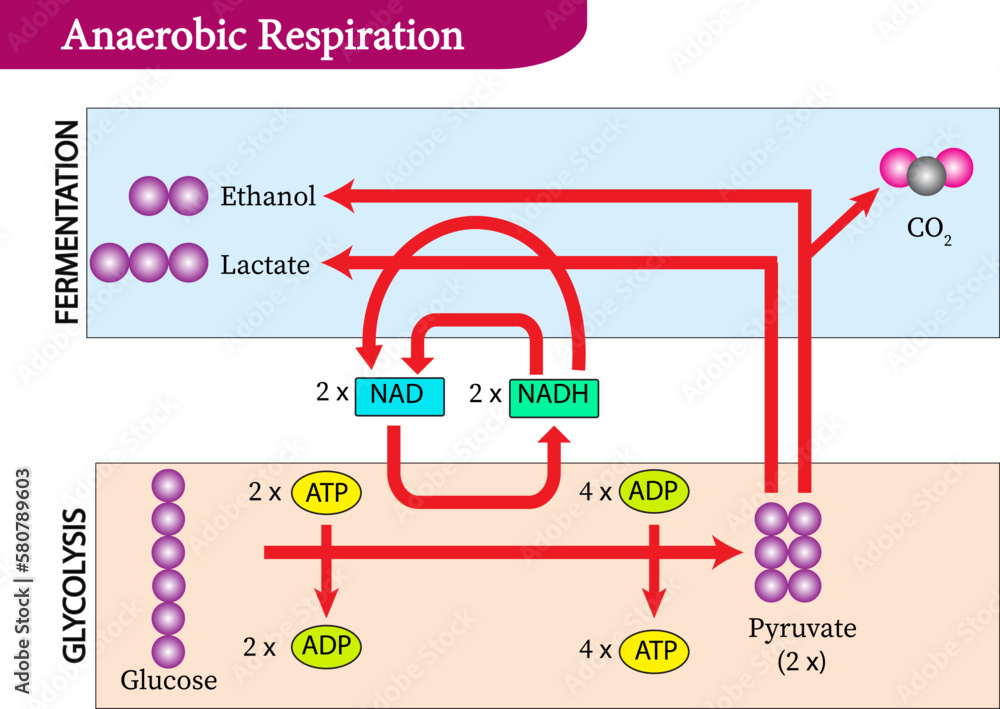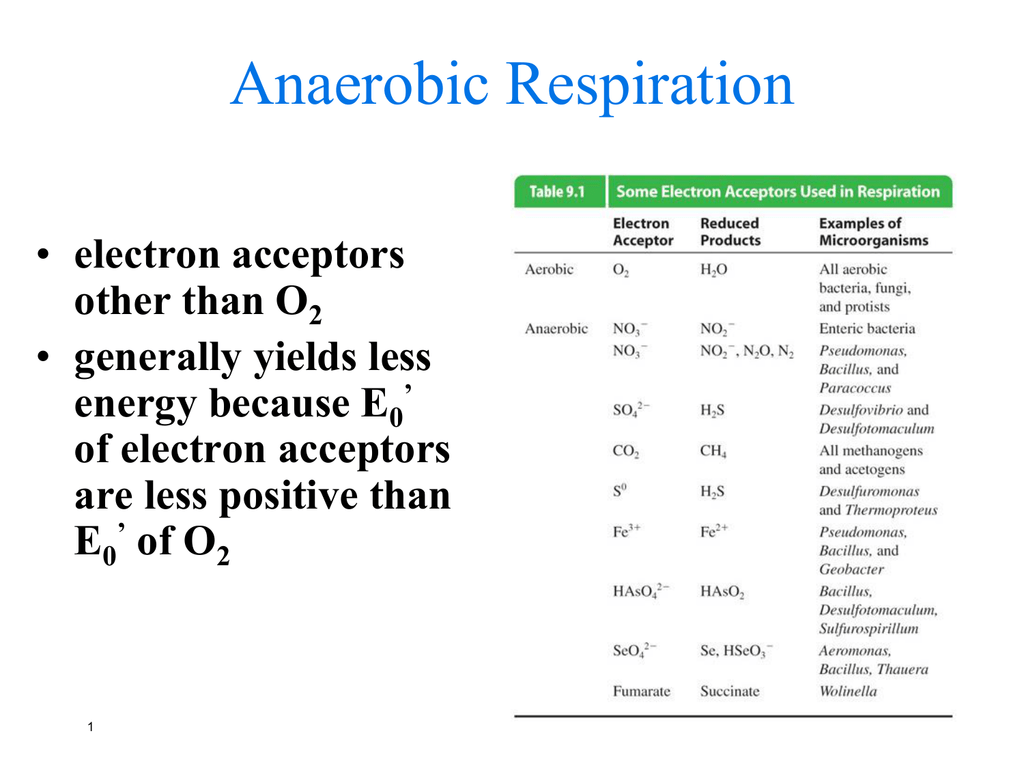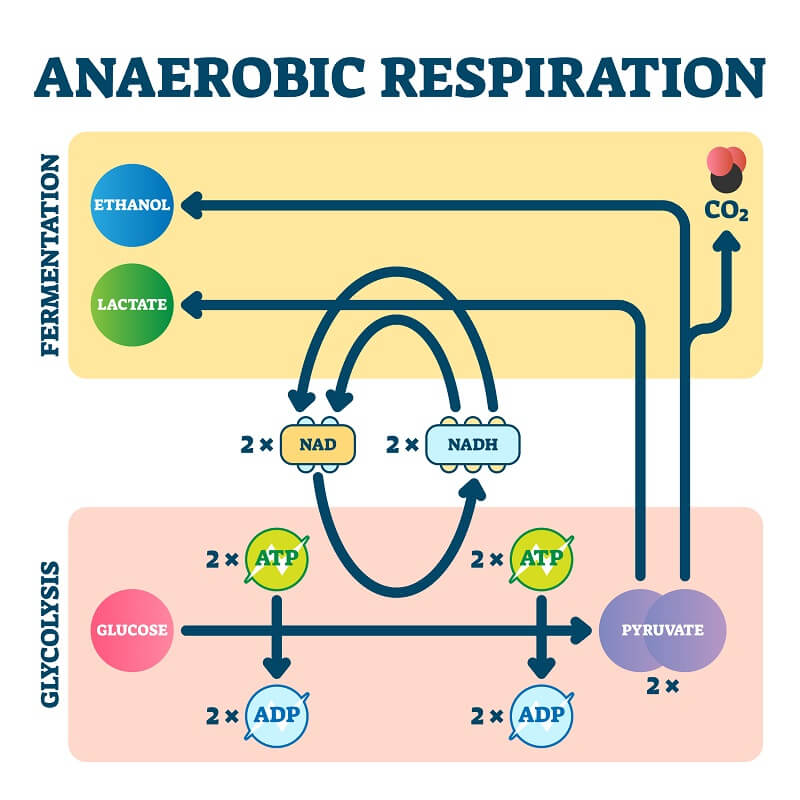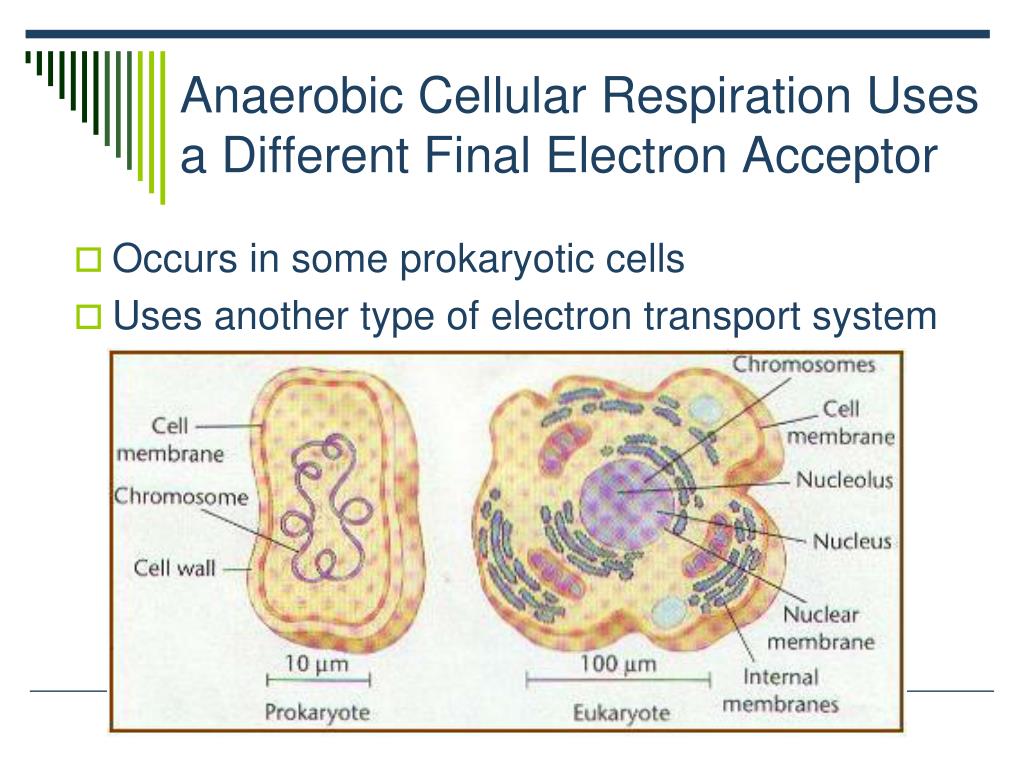What Is The Final Electron Acceptor In Anaerobic Respiration
What Is The Final Electron Acceptor In Anaerobic Respiration - In aerobic respiration, the final electron acceptor (i.e., the one having the most positive redox potential) at the end of the ets is an oxygen. The anaerobic system of biological oxidations that does not use oxygen as the final acceptor of electrons is called anaerobic respiration. Denitrification is the utilization of nitrate (no 3−). Many different types of electron acceptors may be used for anaerobic respiration. 15 rows in aerobic organisms undergoing respiration, electrons are shuttled to an electron transport chain, and the final electron acceptor is.
Many different types of electron acceptors may be used for anaerobic respiration. 15 rows in aerobic organisms undergoing respiration, electrons are shuttled to an electron transport chain, and the final electron acceptor is. The anaerobic system of biological oxidations that does not use oxygen as the final acceptor of electrons is called anaerobic respiration. In aerobic respiration, the final electron acceptor (i.e., the one having the most positive redox potential) at the end of the ets is an oxygen. Denitrification is the utilization of nitrate (no 3−).
15 rows in aerobic organisms undergoing respiration, electrons are shuttled to an electron transport chain, and the final electron acceptor is. The anaerobic system of biological oxidations that does not use oxygen as the final acceptor of electrons is called anaerobic respiration. In aerobic respiration, the final electron acceptor (i.e., the one having the most positive redox potential) at the end of the ets is an oxygen. Many different types of electron acceptors may be used for anaerobic respiration. Denitrification is the utilization of nitrate (no 3−).
MICRO Chap 3 Classification, Metabolism
The anaerobic system of biological oxidations that does not use oxygen as the final acceptor of electrons is called anaerobic respiration. 15 rows in aerobic organisms undergoing respiration, electrons are shuttled to an electron transport chain, and the final electron acceptor is. Many different types of electron acceptors may be used for anaerobic respiration. Denitrification is the utilization of nitrate.
Anaerobic respiration is respiration using electron acceptors other
15 rows in aerobic organisms undergoing respiration, electrons are shuttled to an electron transport chain, and the final electron acceptor is. Many different types of electron acceptors may be used for anaerobic respiration. In aerobic respiration, the final electron acceptor (i.e., the one having the most positive redox potential) at the end of the ets is an oxygen. Denitrification is.
Anaerobic Respiration
Denitrification is the utilization of nitrate (no 3−). Many different types of electron acceptors may be used for anaerobic respiration. In aerobic respiration, the final electron acceptor (i.e., the one having the most positive redox potential) at the end of the ets is an oxygen. 15 rows in aerobic organisms undergoing respiration, electrons are shuttled to an electron transport chain,.
Solved Which of the following can be a final electron
Denitrification is the utilization of nitrate (no 3−). In aerobic respiration, the final electron acceptor (i.e., the one having the most positive redox potential) at the end of the ets is an oxygen. 15 rows in aerobic organisms undergoing respiration, electrons are shuttled to an electron transport chain, and the final electron acceptor is. The anaerobic system of biological oxidations.
Final Electron Acceptors to Regenerate NAD+ Diagram Quizlet
The anaerobic system of biological oxidations that does not use oxygen as the final acceptor of electrons is called anaerobic respiration. Denitrification is the utilization of nitrate (no 3−). 15 rows in aerobic organisms undergoing respiration, electrons are shuttled to an electron transport chain, and the final electron acceptor is. Many different types of electron acceptors may be used for.
Redox potential for different types of final electron acceptors in
In aerobic respiration, the final electron acceptor (i.e., the one having the most positive redox potential) at the end of the ets is an oxygen. 15 rows in aerobic organisms undergoing respiration, electrons are shuttled to an electron transport chain, and the final electron acceptor is. The anaerobic system of biological oxidations that does not use oxygen as the final.
Aerobic vs Anaerobic Respiration Differences & Similarities
The anaerobic system of biological oxidations that does not use oxygen as the final acceptor of electrons is called anaerobic respiration. Many different types of electron acceptors may be used for anaerobic respiration. In aerobic respiration, the final electron acceptor (i.e., the one having the most positive redox potential) at the end of the ets is an oxygen. Denitrification is.
PPT Chapter 5 Microbial Metabolism PowerPoint Presentation, free
Many different types of electron acceptors may be used for anaerobic respiration. 15 rows in aerobic organisms undergoing respiration, electrons are shuttled to an electron transport chain, and the final electron acceptor is. In aerobic respiration, the final electron acceptor (i.e., the one having the most positive redox potential) at the end of the ets is an oxygen. The anaerobic.
Anaerobic Respiration The Definitive Guide Biology Dictionary
In aerobic respiration, the final electron acceptor (i.e., the one having the most positive redox potential) at the end of the ets is an oxygen. Many different types of electron acceptors may be used for anaerobic respiration. Denitrification is the utilization of nitrate (no 3−). The anaerobic system of biological oxidations that does not use oxygen as the final acceptor.
PPT Cellular Respiration Releases Energy from Organic Compounds
Many different types of electron acceptors may be used for anaerobic respiration. Denitrification is the utilization of nitrate (no 3−). The anaerobic system of biological oxidations that does not use oxygen as the final acceptor of electrons is called anaerobic respiration. In aerobic respiration, the final electron acceptor (i.e., the one having the most positive redox potential) at the end.
The Anaerobic System Of Biological Oxidations That Does Not Use Oxygen As The Final Acceptor Of Electrons Is Called Anaerobic Respiration.
Many different types of electron acceptors may be used for anaerobic respiration. Denitrification is the utilization of nitrate (no 3−). In aerobic respiration, the final electron acceptor (i.e., the one having the most positive redox potential) at the end of the ets is an oxygen. 15 rows in aerobic organisms undergoing respiration, electrons are shuttled to an electron transport chain, and the final electron acceptor is.









